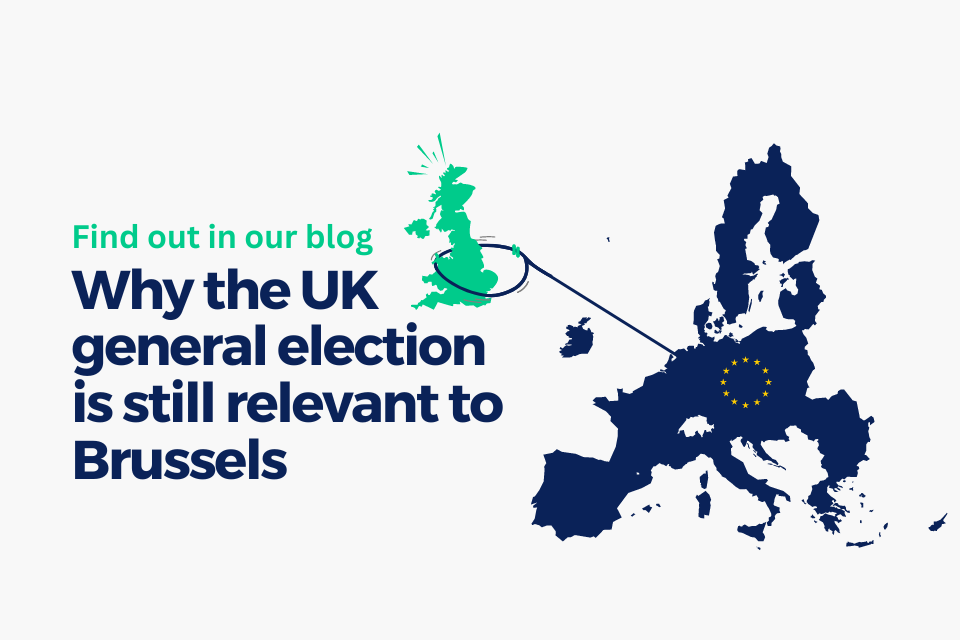The Net-Zero Industry Act: Will it help the EU keep up in the global subsidy race?
Today the European Commission published a key element of the Green Deal Industrial Plan: the Net-Zero Industry Act (NZIA). The proposed regulation lays out measures for strengthening Europe’s net-zero technology manufacturing ecosystem. Announced by Commission President Ursula von der Leyen on 1 February 2023, the contents of this act have been subject to intense speculation and debate.
Here are some key takeaways from the final Commission proposal:
- “Net-Zero Strategic Technologies” identified by the Commission include solar PV, onshore and offshore wind, batteries and storage technologies, heat pumps and geothermal energy, electrolysers and fuel cells, and carbon capture and storage.
- The target for the EU to manufacture 40% of its annual strategic net-zero deployment needs was kept throughout the drafting process and confirmed in today’s publication.
- An article containing sector-by-sector manufacturing capacity targets seen in previous drafts has been removed and replaced by legally non-binding targets in the proposal’s recitals.
- Today’s publication was delayed by several hours due to a disagreement among the Commissioners on the exclusion of nuclear energy from the list of strategic net-zero technologies in the annex. The addition of “ technologies to produce energy from nuclear processes with minimal waste from the fuel cycle” to Article 3’s definition of “Net-zero technologies” appears to have resolved the issue for now.
- Project authorisation will be accelerated by giving net-zero strategic projects the status of the highest national significance possible. Maximum durations are imposed of 9 months for the permitting of smaller manufacturing projects, 12 months for larger projects with a manufacturing capacity of more than 1GW, and 18 months for the operation of storage sites.
The NZIA comes as a response to the US Inflation Reduction Act (IRA), which has been praised by industry for its significant funding amounts and ambitious approach to supporting manufacturing and roll-out of clean technologies.
While the NZIA outlines ambitious goals for European clean tech manufacturing, it is up against stiff competition from policymakers in the US and China, who have already taken significant steps to shore up domestic manufacturing in cleantech.
Will the NZIA be able to compete with the US IRA as well as China’s subsidy schemes? By comparing the funding amounts put on the table, as well as the political support for the policies and the practical implementation of the plans, we can draw some first conclusions on how the NZIA stacks up to the US and China’s plans and whether the EU will succeed in its ambitious goals.
How does EU funding for cleantech stack up to China and the US?
One of the key success factors in the subsidy race between the EU, the US, and China is money: those who can afford to be more generous will attract the most private investment, brightest talent, and greatest innovation.
The US IRA, announced in August 2022, sends strong signals to businesses and investors by offering investments worth over €345bn for energy production and manufacturing. This includes sector-specific funding in the form of tax incentives, grants, and loan guarantees of €234bn to the energy sector, €44.5bn to manufacturing, €43.3bn for the environment, and €21.8bn for transportation and electric vehicles. The IRA was warmly praised by industry and has led scores of cleantech companies to announce new investments in the US.
Meanwhile, China is an even larger rival in cleantech manufacturing, having spent a reported €510bn in energy transition spending in 2021 alone. While its highly regulated industrial landscape poses less of a threat than the IRA of luring EU companies to invest abroad, China has successfully overtaken the EU in the production of key technologies such as solar PV.
In Europe, the funding available for cleantech is generous but spread across numerous EU and Member State funding and investment programmes. The NZIA itself does not introduce new EU funds. Instead, it offers financial support to the cleantech industry through the simplification of state-aid rules and a soon-to-be-published “European Sovereignty Fund”, which is expected to be announced in the summer and will provide “common European funding for common key technologies.” However, whether this will entail the redirection of pre-existing funds, the allocation of fresh funds, or joint borrowing will be a topic of intense debate amongst Member States who are very disunited in their fiscal response to the IRA.
Existing EU programmes, including the Innovation Fund, the Recovery and Resilience Facility, InvestEU, Horizon Europe, and Cohesion policy already offer large sources of investment for cleantech. Much of this funding was secured back in 2020 when the Commission committed to spending €503 bn (25% of its total budget) on climate and environment initiatives between 2021-2027, some €100bn more than the IRA over a similar timeframe. When taking a deeper look at actual spending, including state aid, the EU is also ahead of the US, investing €80bn in renewable energy alone in 2021, almost double the IRA’s total annual offering of €37.9bn across all sectors.
Does the NZIA have enough support from Member States?
Another element that will determine the EU’s success in the subsidy race is unity and political will to implement ambitious reforms. The final NZIA text – and any future EU funding or subsidy programmes – must be decided by a consensual agreement among 27 Member States.
While the US and China have their own challenges in terms of defining policy, they have sent clear long-term investment signals with their cleantech subsidies. The IRA offers funding up until 2035, with US Energy Secretary Jennifer Granholm calling it “10 years of IRA carrots you can take to the bank.” Meanwhile, China’s long-term commitment to state aid is well known. For instance, its Belt and Road Initiative has invested €934bn in foreign infrastructure projects since 2013, with some experts predicting total spending could amount to €7.4tn over the initiative’s lifespan.
The longevity of EU support is much less clear and discussions on EU subsidies are often highly contentious. Member States are split over state aid and EU funding. A large minority of the EU27 have issued statements outlining fears that a loosening of state-aid rules for industry could lead to the fragmentation of the internal market, harmful subsidy races, and weakening of regional development. Italy has argued that any loosening of rules would disproportionately benefit Germany and France who already spend 77% of all European state aid under the current framework.. This dynamic is demonstrated in the Temporary Crisis and Transition Framework (TCTF), which provides “targeted and temporary” support until 31 December 2025 only. The need to forge consensus is again evidenced in its aid matching clause, which restricts matched aid to be spent in less developed “assisted areas”, preventing richer Member States from further developing national industrial zones.
Will the Complexity of EU Funding Programmes Undermine the NZIA Approach?
The IRA’s simplicity has garnered applause from industry players, who are pleased with the relative ease of applying for IRA grants. In China, a country where 60% of businesses are state-owned, state funding for domestic industry is readily available in strategic sectors such as cleantech.
In the EU however, the plethora of funding and investment programmes, both at EU and national level, makes it much more difficult for EU industry, especially SMEs, to access funding. The NZIA tries to overcome this problem through the creation of the Net-Zero Europe Platform which will “advise” net-zero projects as to what financing they would have access to. However, in its current form, the platform is simply an advisory body, falling short of offering one-stop-shop access to finance offered by the IRA and China.
Another solution to this issue could be found through the previously mentioned European Sovereignty Fund. This could potentially re-route existing funding into an easier model, or offer large amounts of simple-to-access new funding dedicated to the net-zero transition. However, the lack of consensus in the Council as to how new funds or instruments should be designed may hamper progress on this instrument.
What’s next for the NZIA?
The NZIA provides a clear signal for industry to accelerate its manufacturing of key technologies to support reaching the bloc’s 2050 net-zero target. In terms of overall funding amounts, the EU is ahead of the US, but political disagreements among EU Member States as well as the complexity of EU funding programmes may undermine the effectiveness of the NZIA in practice.
Now that the Commission proposal is ready, talks among Member States and Members of the European Parliament will begin. There are broad disagreements on whether the Commission’s state-led approach goes against established liberal values and technological neutrality. We can expect heated discussions on the targets and technologies selected for support – already the debate on whether to include nuclear inflamed discussions among EU Commissioners and delayed the publication of the NZIA by several hours. There is also likely to be debate on the trade-offs between environmental aims and emissions reductions when it comes to accelerated permitting procedures.
Policymakers will be keen to finalise the file ahead of the EU elections in 2024. The final shape of the NZIA, and therefore its effectiveness for industry, will depend on the outcome of discussions in the Council and Parliament.
Authors:
Giorgio Severi is a Consultant at Acumen Public Affairs, where he supports leading stakeholders, from the mobility and construction sectors, to navigate the green transition as the legislative environment changes.
Keiran Foster is a Consultant at Acumen Public Affairs, working on a broad range of sustainability and energy issues, advising clients on how best to navigate European politics and policy to enable them to achieve their goals.


